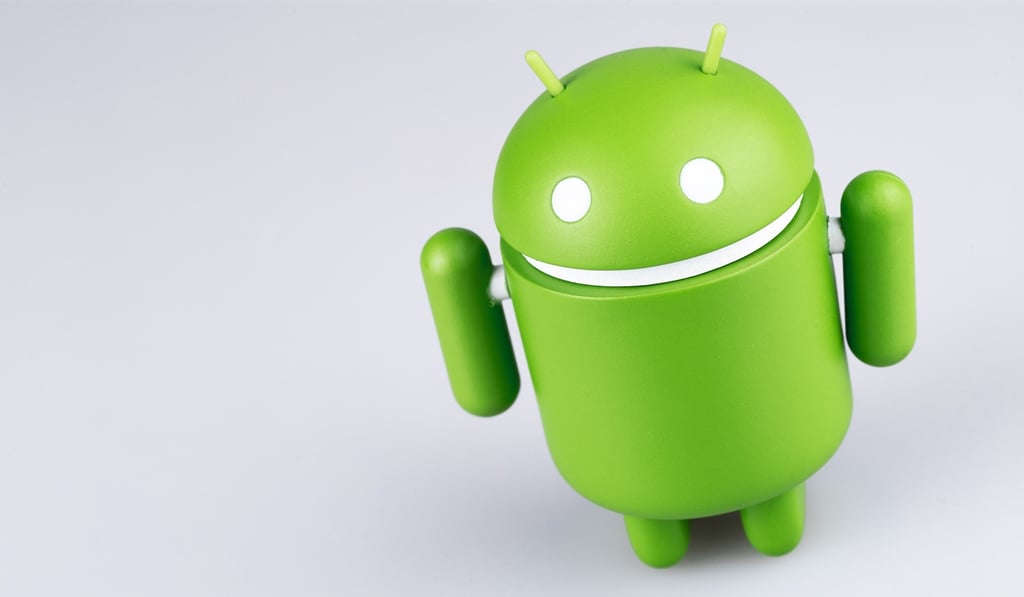Datamation content and product recommendations are
editorially independent. We may make money when you click on links
to our partners.
Learn More
Convergence is not a word on everybody’s lips. But if Canonical Software, the company that controls Ubuntu, has any say, it soon will be.
Others may be more skeptical.
Canonical describes convergence as “a single software platform that runs across smartphones, tablets, PCs, and TVs. It is designed to help make converged computing a reality: one system, one experience, multiple form factors.”
In other words, convergence means the same operating system and desktop environment on all devices. For developers, it will mean that an application can be developed once, rather than ported separately to each form factor. For users, it means that all devices will behave in similar ways, and communicate directly with each other via Bluetooth or USB.
So far, the only working example of convergence on Linux is the Aquaris M10 Ubuntu Edition tablet, but convergence is also expected to arrive on Ubuntu-based phones before the end of 2016.
In emphasizing convergence, Canonical joins Microsoft as an advocate of a common computing experience across all devices. In fact, convergence has been the main direction for Ubuntu development for over four years. However, exactly how many have a use for convergence remains uncertain.
Does Anybody Want Convergence?
At first, convergence sounds like an idea that is long overdue. With the computer market increasingly divided between phones and tablets on the one hand, and laptops and workstations on the other, it seems a natural next step to provide a common experience on all these devices. After all, the functions of these devices are increasingly identical, and already they all use the same cloud services. So why should users be expected to learn a new interface depending on the device they are using?
However, I suspect that such a line of argument would have had greater appeal seven years ago, when the mixture of devices was new and not taken for granted. By now, users are accustomed to different graphical interfaces and different applications. The interfaces for phones and tablets in particular are simple enough that they are easy to learn.
If anyone is more than mildly annoyed by such differences, they are keeping remarkably silent on the subject. Or perhaps the convenience of different form factors is great enough to outweigh the annoyance. After all, if Windows 3.1 could be tolerated by users, why would anyone rebel over Android or iOS?
At any rate, a common interface may be desirable, but remains difficult, if not impossible, to fully implement. Because mobile and desktop computers differ vastly in screen size, RAM, and storage space, designing for all of them at once inevitably means designing for mobile devices, which are the simplest — and that is where the problem lies. Neither Linux distributions nor their proprietary rivals managed to design successfully for netbooks during their short period of popularity, and phones and tablets restrict design far more than netbooks ever did.
Take, for example, Ubuntu’s Unity interface. Especially with a touch screen interface, Unity works supremely well on a tablet with a ten-inch screen like the Aquaris M10. In fact, I would go so far as to say that it is the best interface I have ever seen on a tablet.
However, on desktops, where Unity first debuted, its utility is much more limited. For one thing, although touch screen monitors have been available for several years, they remain rare. That means that the finger swipes that are Unity’s main strength are unavailable. For another, Unity works best when apps open full-screen, and users do not have to move back and forth between several screens as they work. As a result, Unity is only indifferently suited for many of the productivity tasks that are routinely performed on the desktop.
The same, of course, is also true in reverse. Using the graphics editor Krita on a phone, with its complex editing window, would be a nightmare — which is why Krita developed a separate version called Krita Sketch for small screens. Similarly, reviews repeatedly complain about the illegibility of the menus in the version of LibreOffice that ships with the Aquaris M10 Ubuntu Edition.
The point is not that one form factor is superior to the others. Rather, it is that each is a different context. To implement convergence, either some form factors have to be emphasized at the expense of the others, or else the necessary compromises mean that the results are less than ideal on all of them.
Of course, improvements can be made to make the experience as similar as possible on all devices. Yet even improvements have their costs. For example, Desktop mode on the Aquaris M10 Ubuntu Edition, is noticeably slower that the default Tablet mode. Even if Desktop mode improves — as no doubt it will — how many users will actually use it remains uncertain.
The Traveling Audience
If I am right, convergence will not be the next major direction in computing that Canonical is apparently hoping. However, that is not to say that it will not be welcome.
For those who travel, or move from site to site during their work day, convergence should be exactly what they are looking for. Even in its initial release, an Aquaris M10 Ubuntu edition tablet is so portable that it makes a standard laptop look as primitive and as outdated as an eight-inch floppy disk. Weighing just under half a pound itself, with the addition of a compact or portable keyboard, a mouse, and an OTG card for connectivity, it is the central part of a mobile office solutionthat weighs less than three pounds.
In fact, having used one for nearly a month now, I can recommend it enthusiastically — at least once the interface and the font size has been increased to ease the eye strain.
And the technology, as they say, is only going to improve.
Still, travellers are a special use case. For the average user, whose main activities are texting and web browsing, I suspect that convergence, when it comes generally into use, might as well not exist. It is something for which they will have no regular use.
In the end, the work on convergence may be no more glamorous than the development of wireless and video drivers. Improvements of convergence may come to seem necessary, but most users will likely take it for granted.
I can see why Canonical should be emphasizing convergence. It is arriving late in a well-established market, and needs to find a way to differentiate itself from competitors. Having spent years trying to catch up to existing desktop environments with the Ubuntu distribution, it naturally wants to find a way to get ahead for once. Yet, except in specialized circles, I doubt that convergence will have the impact anticipated, even while I look forward to seeing it improve.
-
Huawei’s AI Update: Things Are Moving Faster Than We Think
FEATURE | By Rob Enderle,
December 04, 2020
-
Keeping Machine Learning Algorithms Honest in the ‘Ethics-First’ Era
ARTIFICIAL INTELLIGENCE | By Guest Author,
November 18, 2020
-
Key Trends in Chatbots and RPA
FEATURE | By Guest Author,
November 10, 2020
-
Top 10 AIOps Companies
FEATURE | By Samuel Greengard,
November 05, 2020
-
What is Text Analysis?
ARTIFICIAL INTELLIGENCE | By Guest Author,
November 02, 2020
-
How Intel’s Work With Autonomous Cars Could Redefine General Purpose AI
ARTIFICIAL INTELLIGENCE | By Rob Enderle,
October 29, 2020
-
Dell Technologies World: Weaving Together Human And Machine Interaction For AI And Robotics
ARTIFICIAL INTELLIGENCE | By Rob Enderle,
October 23, 2020
-
The Super Moderator, or How IBM Project Debater Could Save Social Media
FEATURE | By Rob Enderle,
October 16, 2020
-
Top 10 Chatbot Platforms
FEATURE | By Cynthia Harvey,
October 07, 2020
-
Finding a Career Path in AI
ARTIFICIAL INTELLIGENCE | By Guest Author,
October 05, 2020
-
CIOs Discuss the Promise of AI and Data Science
FEATURE | By Guest Author,
September 25, 2020
-
Microsoft Is Building An AI Product That Could Predict The Future
FEATURE | By Rob Enderle,
September 25, 2020
-
Top 10 Machine Learning Companies 2020
FEATURE | By Cynthia Harvey,
September 22, 2020
-
NVIDIA and ARM: Massively Changing The AI Landscape
ARTIFICIAL INTELLIGENCE | By Rob Enderle,
September 18, 2020
-
Continuous Intelligence: Expert Discussion [Video and Podcast]
ARTIFICIAL INTELLIGENCE | By James Maguire,
September 14, 2020
-
Artificial Intelligence: Governance and Ethics [Video]
ARTIFICIAL INTELLIGENCE | By James Maguire,
September 13, 2020
-
IBM Watson At The US Open: Showcasing The Power Of A Mature Enterprise-Class AI
FEATURE | By Rob Enderle,
September 11, 2020
-
Artificial Intelligence: Perception vs. Reality
FEATURE | By James Maguire,
September 09, 2020
-
Anticipating The Coming Wave Of AI Enhanced PCs
FEATURE | By Rob Enderle,
September 05, 2020
-
The Critical Nature Of IBM’s NLP (Natural Language Processing) Effort
ARTIFICIAL INTELLIGENCE | By Rob Enderle,
August 14, 2020
SEE ALL
ARTICLES









